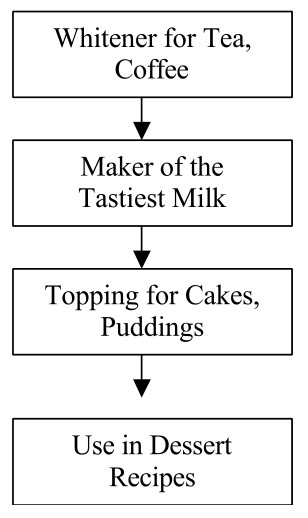Dabur Chyawanprash – Dabur Chyawanprash basically had the positioning of being good for health and digestion. To make the brand more attractive to the consumer, the nutritional element was added to its positioning.
Keo Karpin Hair Oil – Keo Karpin was positioned as hair oil that assisted “styling” the hair. It was hence endorsed by celebrities, but in the recent years, hair oil came to be seen as something that makes the hair sticky. To make it more acceptable in the changed circumstances, Keo Karpin was repositioned as “the non-sticky hair oil.”
Onida TV
Onida was the first indigenous premium TV brand in India. Its unique advertising gave it a special status among well-to-do consumers. The hugely successful “devil” campaign proclaimed “Neighbour’s Envy, Owner’s Pride.” In the mid-nineties, however, there was tough competition unleashed by MNC brands like Sony, Samsung and LG. Thus the positioning had to be made contemporary. It was then changed to “World’s Envy, India’s Pride” to signal that Onida was as good as the foreign brands.
Differentiation Brands From Competitors
Mint – 0 Mint-O’s position in 1990 was “adult candy.” This was to enthuse grown-ups to consume peppermint. This may not have helped the brand to stand out. In 1995, a position that directly aimed at competition (Nestle’s Polo) was configured. Polo positioned itself as “the mint with the Hole.” Mint-O positioned itself as “All Mint, NoHole.” One of the advertisements even argued, “If your head doesn’t have a hole, why should your mint.” Positioning the brand head-on with Polo gave it a distinct focus.

Changed Market Conditions
Horlicks – Was initially both a substitute and an additive to milk. This positioning served it well till the scarcity of milk was overcome in several parts of the country. Horlicks then shifted its positioning to “energy giver and health provider.”

Illustrated Weekly Illustrated Weekly was a leading family magazine targeting the households in the ’70s. This position was taken over in the eighties by India Today. Thus, Weekly predominantly became a political magazine though it covered other topics as well. Finally, it became a broadsheet to save on costs and eventually exited. This shows how changed market conditions could force repositioning though the repositioning itself may not save the brand.
Milkmaid
A classic illustration of repositioning is Nestle’s Milkmaid. It started as a whitener for tea and coffee. Again like Horlicks, when the milk scarcity eased, it changed its positioning to “topping for cakes and puddings and use in dessert recipes2.”

To sum up, repositioning is done with the intention of attracting customers back into the fold. A study of the above types of repositioning reveal that it is more often done to increase either the users or the number of uses A limitation of the list of above illustrations, of course, is that it contains few durables or services. Thus, if we consider the FMCG .category in India, most repositioning exercises seem to be broadening the position rather than altering it. As mentioned earlier, some of these repositioning statements have been changed again. But that does not detract from their merit as illustrations.

